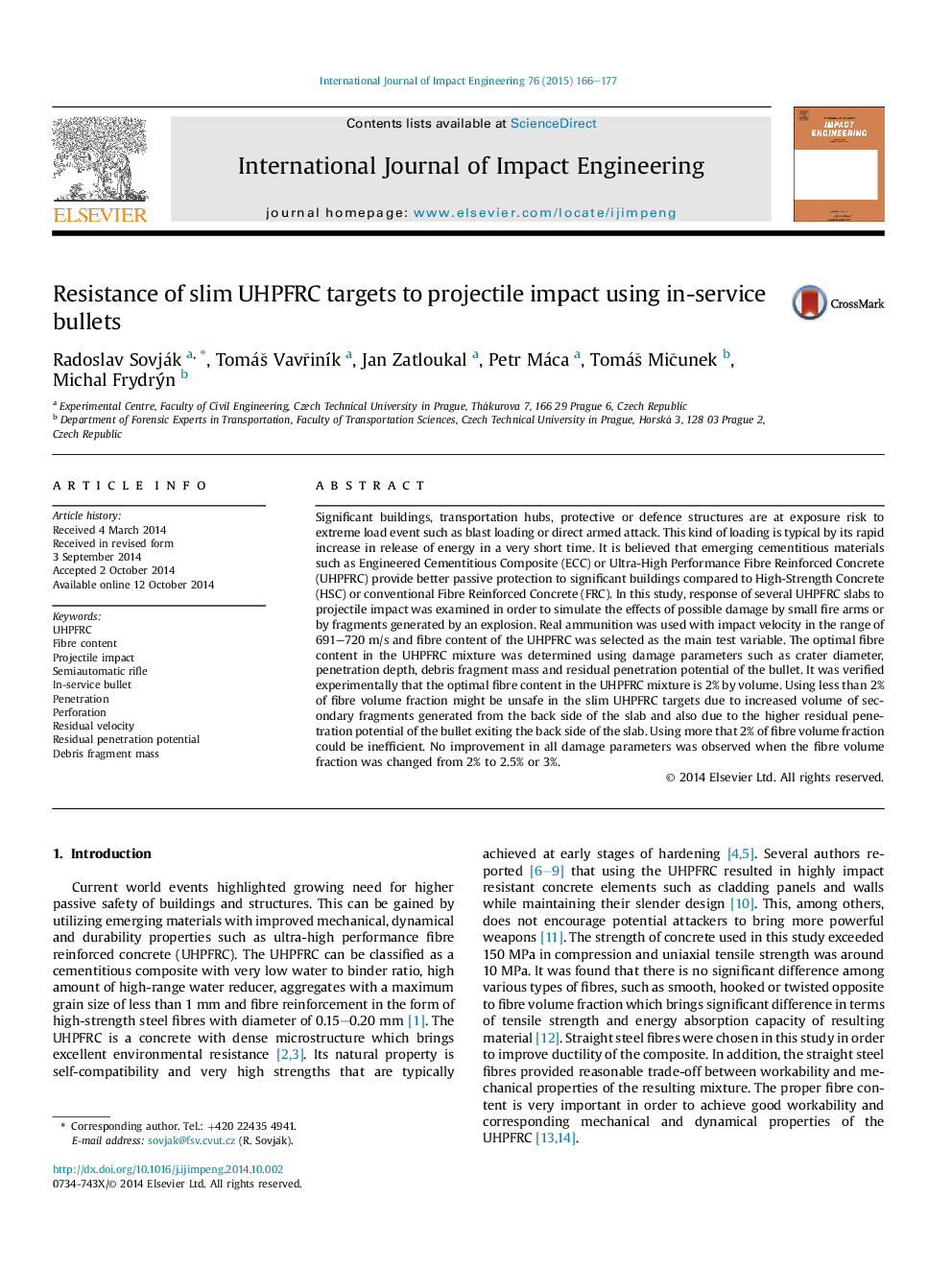| Article ID | Journal | Published Year | Pages | File Type |
|---|---|---|---|---|
| 776463 | International Journal of Impact Engineering | 2015 | 12 Pages |
•UHPFRC slabs were subjected to projectile impact.•Projectile impact tests were carried out by using a real ammunition.•The fibre content in the UHPFRC was set as the main test variable.•Established damage parameters included penetration depth, crater diameter and residual penetration potential of the bullet.•The optimal fibre content in the UHPFRC mixture was determined to be 2% by volume.
Significant buildings, transportation hubs, protective or defence structures are at exposure risk to extreme load event such as blast loading or direct armed attack. This kind of loading is typical by its rapid increase in release of energy in a very short time. It is believed that emerging cementitious materials such as Engineered Cementitious Composite (ECC) or Ultra-High Performance Fibre Reinforced Concrete (UHPFRC) provide better passive protection to significant buildings compared to High-Strength Concrete (HSC) or conventional Fibre Reinforced Concrete (FRC). In this study, response of several UHPFRC slabs to projectile impact was examined in order to simulate the effects of possible damage by small fire arms or by fragments generated by an explosion. Real ammunition was used with impact velocity in the range of 691–720 m/s and fibre content of the UHPFRC was selected as the main test variable. The optimal fibre content in the UHPFRC mixture was determined using damage parameters such as crater diameter, penetration depth, debris fragment mass and residual penetration potential of the bullet. It was verified experimentally that the optimal fibre content in the UHPFRC mixture is 2% by volume. Using less than 2% of fibre volume fraction might be unsafe in the slim UHPFRC targets due to increased volume of secondary fragments generated from the back side of the slab and also due to the higher residual penetration potential of the bullet exiting the back side of the slab. Using more that 2% of fibre volume fraction could be inefficient. No improvement in all damage parameters was observed when the fibre volume fraction was changed from 2% to 2.5% or 3%.
